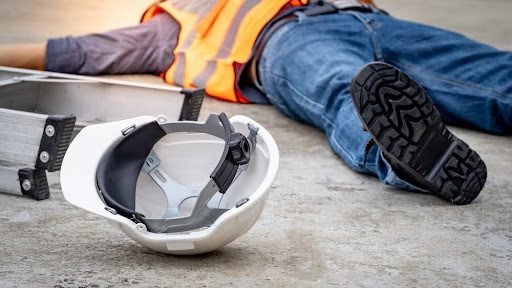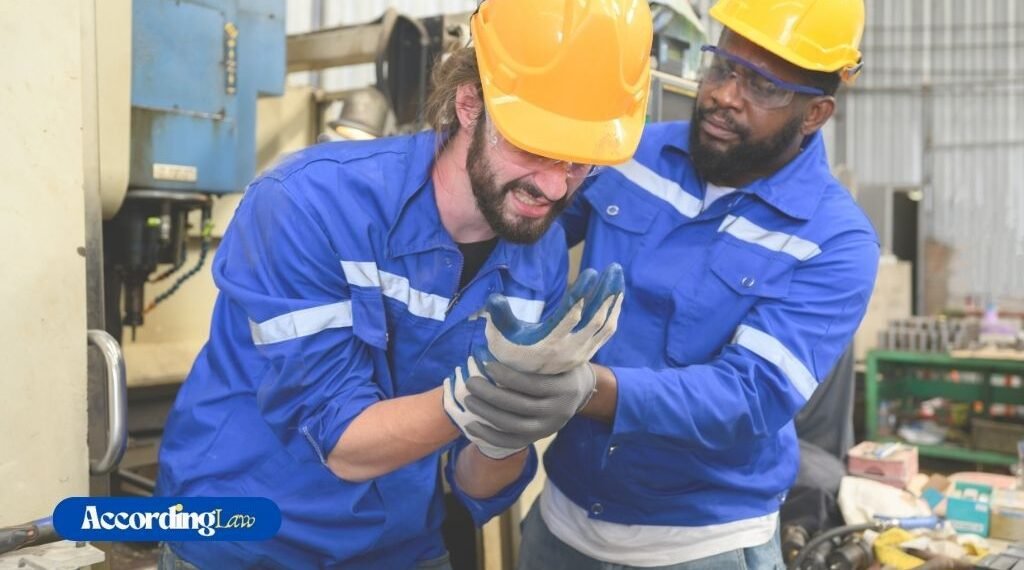Construction work is among the most hazardous jobs in America, exposing workers to falling objects, dangerous machinery, unstable structures, and electrical hazards. When accidents occur, injuries can be life-altering, often due to employer negligence. Proving negligence requires evidence that the employer failed to provide a safe workplace, violating safety regulations.
Fortunately, strict construction site rules create a clear trail of evidence, from missing safety equipment to inadequate training. Understanding how to document these failures can help you build a strong case and secure fair compensation for your injuries.
Table of Contents
How Does Employer Negligence Occur in Construction
Employer negligence in construction occurs when a company fails to provide a safe workplace, violating safety regulations and putting workers at risk. This is a critical issue, given the construction industry’s high hazard rate, with 1,075 fatalities reported in 2023, according to the U.S. Bureau of Labor Statistics (BLS). Employers must ensure proper safety equipment, adequate training, and well-maintained machinery to prevent accidents like falls, slips, and trips, which accounted for 39.2% of construction-related deaths in 2023. Cutting corners to save money or time can lead to serious injuries.
Negligence can be obvious, like a lack of safety harnesses, or subtle, such as poor equipment maintenance. The key is proving the employer knew or should have known about the hazard and failed to address it, leading to worker harm.
What Are the Essential Elements You Must Prove for Employer Negligence?
To succeed in a construction-related employer negligence claim, you need to prove several legal elements. Each one builds your case and shows how the employer’s failure to uphold their responsibilities caused your injury. These are the essential elements you must demonstrate:
Establishing Duty of Care in Construction Work
To prove employer negligence in construction, you must establish their duty to keep workers safe. OSHA enforces strict safety regulations, requiring proper equipment, training, and inspections. Employers must warn workers about hazards and fix dangerous conditions promptly. They should take reasonable precautions to prevent foreseeable accidents, like implementing safety procedures for heavy machinery. Failure to uphold these responsibilities can lead to serious injuries, making legal accountability essential for worker protection and fair compensation.
Proving employer negligence in construction requires specialized knowledge of safety regulations and legal procedures; gathering evidence is crucial, but professional help is often necessary to build a strong case. When searching for injury lawyer representation in your area, ServeTheInjured, a personal injury law firm directory, can help you find experienced attorneys who specialize in construction accident cases and understand the complexities of proving employer negligence.
Proving Breach of Safety Standards
Once you establish that your employer had a duty to keep you safe, you must prove they failed to meet that duty, known as a breach of duty of care. In construction cases, this often involves showing violations of OSHA regulations, industry standards, or basic safety practices. Common breaches include a lack of fall protection, missing hard hats, untrained workers handling machinery, unsecured scaffolding, and poorly maintained equipment.
To prove a breach, gather photographs, witness statements, safety reports, company policies, and expert testimony. Strong evidence strengthens your case and ensures accountability.
Demonstrating Direct Causation Between Negligence and Injury
Proving employer negligence isn’t enough, you must show their actions directly caused your injury. Sometimes, the connection is clear, like falling from a scaffolding without safety railings. In complex machinery accidents, expert testimony may be needed to explain how poor maintenance led to injury.
You must also prove your injury wouldn’t have happened if proper safety procedures were followed. This is known as the “but for” test, if your employer had acted responsibly, would you have been hurt? If the answer is no, then causation is established.
What Types of Evidence Can Strengthen Your Construction Negligence Case?
Building a strong construction negligence case requires solid proof that the employer failed to maintain safe conditions. Several forms of evidence can highlight safety violations and support your claim for fair compensation. These are the most important types of evidence to gather:
OSHA Violations and Safety Inspection Reports
OSHA violations are powerful evidence in construction negligence cases, as they create an official record of safety failures. These violations prove that an employer knew the rules but chose not to follow them. OSHA categorizes violations from minor infractions to willful violations, where employers deliberately disregard worker safety. Serious violations involve life-threatening risks, while willful violations damage an employer’s defense.
If OSHA hasn’t inspected your workplace, you can request an investigation, and their findings can strengthen your case.
Witness Statements and Expert Testimony
Witnesses play a key role in construction negligence cases. Coworkers can testify about safety conditions, missing equipment, and whether the employer was warned about hazards. Expert witnesses, such as safety specialists, can analyze the accident scene, explain preventable risks, and assess industry standards.
Medical experts help establish the severity of injuries and counter employer claims that injuries were unrelated or not serious. Strong witness testimony strengthens your case, proving negligence and ensuring fair compensation.
Equipment Maintenance and Training Records
Poor equipment maintenance is a major cause of construction accidents, leading to unexpected malfunctions and serious injuries. Employers must keep maintenance records to ensure safe working conditions. Evidence of skipped maintenance, delayed repairs, or outdated equipment can indicate negligence.
If an accident involves a machine that should have been repaired or replaced, it strengthens your case. Training records also matter, employers must provide proper safety training. If training is inadequate, it supports a negligence claim.
How Can You Build a Strong Legal Strategy for Maximum Compensation
Successfully proving employer negligence requires a comprehensive legal strategy that addresses all aspects of your case. Beyond proving negligence, you must document the full extent of your injuries and their impact on your life. This includes medical records, employment records, and witness testimony from coworkers and family.
Your strategy should also account for long-term effects, as construction accidents often lead to permanent disabilities. Settlement negotiations can resolve cases out of court, but your attorney must be prepared for trial to secure fair compensation.
Conclusion
Proving employer negligence in a construction accident case can be complex and challenging. However, with the right evidence and support, you can hold your employer accountable and receive the compensation you deserve.
Remember to document everything, work with experienced professionals, and prioritize your health and well-being. By understanding how to prove employer negligence, you can take control of your situation and seek justice.


